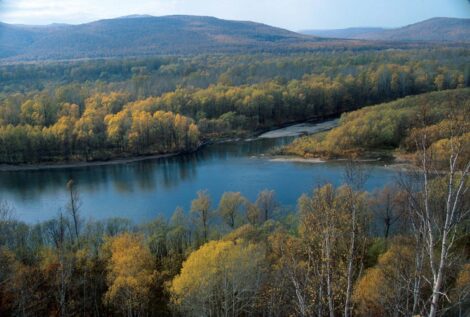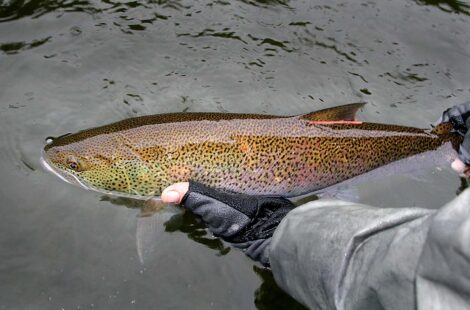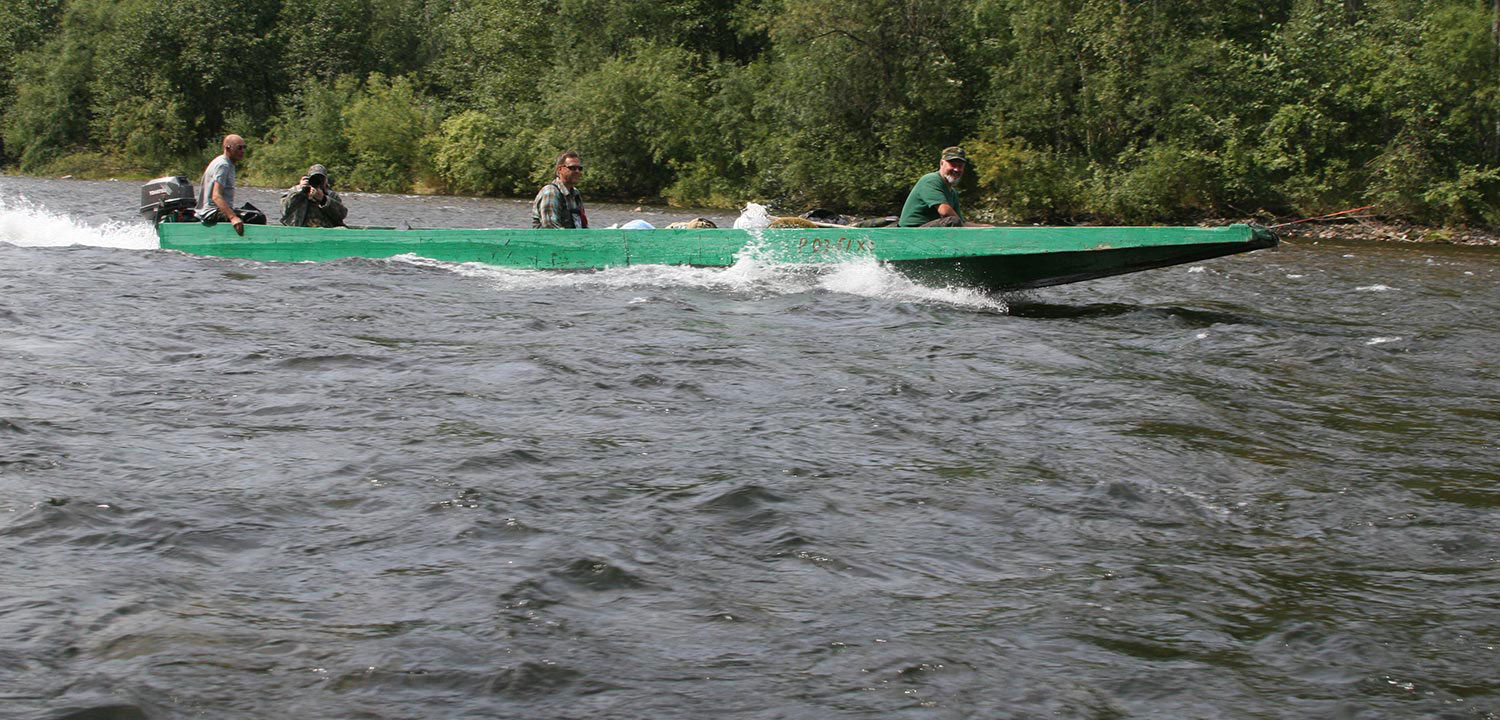Notes from the Field: Monitoring taimen populations in the Russian Far East.
I had an opportunity to travel to one of our salmon strongholds in the Russian Far East this summer: the Koppi River in the Khabarovsk region. This was my fifth trip to this great river system, and this time I was fortunate to travel with our Western Pacific Director, Mariusz Wroblewski, and two of our key Russian partners, Alexander Kulikov and Sergei Zolotukhin.

The Koppi River flows into the Sea of Japan along the eastern side of the great Sikhote-Aline mountain range. The climate is mild by Russian standards, but experiences much colder conditions than rivers at the same latitudinal range along the western coast of North America. Biologically, this watershed is one of the most diverse regions in all of the Russian Federation, and boasts an unusual collection of fauna and flora. Here you will find some important charismatic species including Amur tigers, Himalayan black bears, brown bears, Stellar’s sea eagles, and Blakiston’s Fish Owl. The forests are a nice mix of conifer and broadleaf trees, including the commercially valuable Korean pine, now considered a threatened species. One of the most important new developments in conservation in this region is the establishment of a new protected area (PA), known as the Koppi River Reserve. With support from WSC, this effort was led by our key conservation partner in Khabarovsk, Alexander Kulikov. The focus of my recent trip was on one of the most unusual and enigmatic salmonids in the world: Sakhalin or sea run taimen.

Known to scientists as Parahucho perryi, it is the only member of its genus and is related to Eurasian salmonids in the genus Hucho (Huchen or Taimen) and Brachymystax (Manchurian trout). Like other members within the genus Hucho, these fish serve as the top predator in river ecosystems and can reach ages exceeding 30 years and lengths exceeding 2 meters (over 6 feet!). They are truly giant, ancient fish, and a formidable predator. The Sakhalin taimen is vulnerable to a number of threats, and one of the clear needs is to establish a scientifically-grounded method of estimating their abundance. This is critical to determine whether our conservation efforts are leading us in the right direction, yet no dedicated program exists like this in the Koppi River. Our aim on this trip was to change this by establishing a tagging program that could generate an estimate of the species population size.

We are delighted to report that we observed 20 very large (1+ meter long) taimen within the Protected Area. Because the Koppi Reserve has limited access and aggressive anti-poaching efforts are underway, this shows our efforts are helping conserve these threatened fish in a very direct way. Lower in the river, we captured, tagged, and released 15 taimen, and spent time training fishing guides and developed the protocol for data collection. We also heard from our partners that the river basin is now home to six resident Amur tigers. Fewer than 80 Amur tigers exist in the wild, so the Koppi River is also a tiger stronghold!
This is truly an exciting time as we pull together a dedicated team and help lead the effort to establish an important scientific foundation for our conservation work in this remote corner of Russia. It is believed that the Koppi River supports the largest, healthiest population of Sakahlin taimen throughout its range. Our efforts aim to keep it that way.
